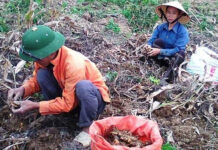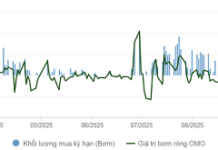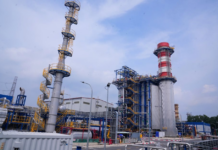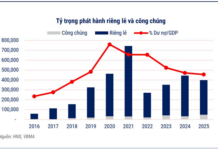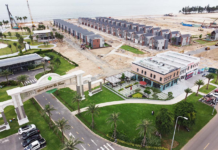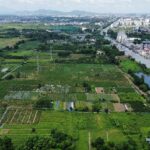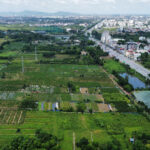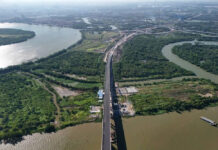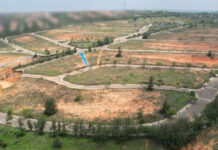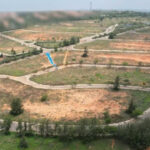On the morning of October 15th, Deputy Prime Minister Tran Hong Ha chaired a meeting to review the Ministry of Agriculture and Environment’s report on the progress of developing the land database and solutions to expedite its implementation. The meeting was held online with representatives from provincial and municipal People’s Committees nationwide.
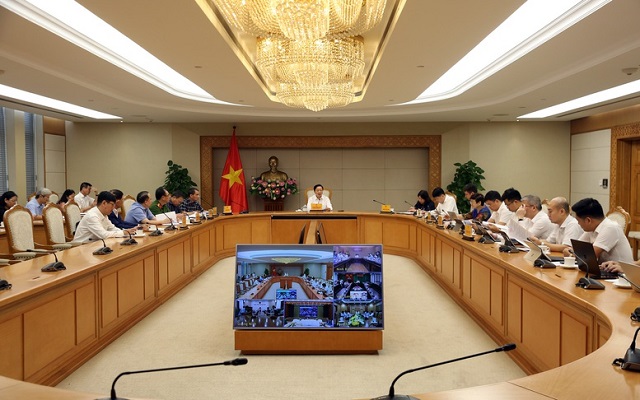
Deputy Prime Minister Tran Hong Ha chairs the meeting on land database development – Photo: VGP/Minh Khoi
|
Deputy Prime Minister Tran Hong Ha emphasized that building and operating the land database is a critical task mandated by the Land Law and has been a focus of the Government, ministries, sectors, and localities.
Essential Foundation for State Management
The land database is an essential foundation for state management, going beyond mere data aggregation to include comprehensive information on land plots, cadastral maps, and related measurement and storage activities.
However, the Deputy Prime Minister noted that despite the Land Law’s clear provisions on structure, management methods, and completion timelines, the implementation progress at both central and local levels remains slow.
Significant state budget investments have been made in measurement and statistics, but the data remains incomplete and inaccurate, failing to meet the requirements of being “clean” and “live” with regular updates. Therefore, there is a need to separate measurement and enumeration tasks and focus on database development and management tools leveraging technology and digitization.
Specifically, land data does not yet meet minimum requirements such as tracking land price fluctuations, managing land use purposes, or updating measurement data and maps.
For instance, the future direction is to apply a unified data-driven pricing method, determining land prices based on value regions and standard land plots, using actual transaction data to establish objective land prices for all purposes, from taxes and fees to compensation and support. However, this has not yet been implemented.
The Deputy Prime Minister requested the meeting to clarify core issues: the desired output of the land database; implementation methods, building on existing results, experiences, and data; mechanisms for daily data maintenance, exploitation, monitoring, and updates to ensure data remains “live” and “clean”; and financial mechanisms, investment projects, and clear division of tasks between central and local levels.
Localities Propose Unified Software and Centralized Data
According to the Ministry of Agriculture and Environment’s report, land database development primarily uses input data such as cadastral maps, land registration files, land use right certificates, land administration files, land price data, land statistics and inventory data, and land use planning and plan data.
For the centrally developed land database, the Ministry has completed four data components: current land use status at regional and national levels; national land use planning and plans; land price frameworks; and basic land surveys at regional and national levels. However, these data sets require further updates and supplementation to align with current land law provisions.
Nationwide, 34/34 provinces and cities have developed cadastral databases for 2,342/3,321 commune-level administrative units; completed land statistics and inventory databases (current land use status); and established provincial-level land use planning and plan databases.
Localities have also implemented unique land plot identifiers with complete spatial data, attribute data, and unstructured data; organized land user authentication with citizen ID cards; interconnected land registration and tax authorities; and linked land information systems with the National Public Service Portal.
The Ministry of Agriculture and Environment assessed that land database development remains slow due to insufficient local resource allocation; low-quality, frequently changing input data; inadequate IT infrastructure, equipment, and software for secure information sharing and connectivity; limited human resource capacity; and the need for localities to convert and merge land databases under the two-tier local government model.
Moving forward, land database development is being pursued in two directions. First, for areas with existing data, the Ministry is focusing on standardizing, cleaning, and updating land plots in various formats to ensure data is “accurate, complete, clean, and live,” connecting with population databases and related systems. Second, for areas without databases, the Ministry will digitize all available land documents, maps, and files for future management.
Localities will digitize, standardize, and synchronize data with the Ministry of Agriculture and Environment. Concurrently, the Ministry will finalize the central infrastructure project to connect with the national population database and national data center, ensuring a unified and interconnected system from central to local levels.
At the meeting, representatives from ministries, sectors, businesses, and localities agreed on the need for a unified national land database software system, centrally managed from the central to local levels. This approach avoids fragmentation, reduces costs, ensures data accuracy and synchronization, and facilitates integration with other systems such as population, administrative procedures, planning, and land pricing.

The Deputy Prime Minister requires all land-related administrative procedures to simultaneously update data – Photo: VGP/Minh Khoi
|
Leveraging Existing Infrastructure, Data, and Software
Concluding the meeting, Deputy Prime Minister Tran Hong Ha affirmed that the land database is a critical national database, but its development, management, and operation remain limited and lax due to data and information gaps. Therefore, the land database project must clearly define objectives, collect “accurate, complete, clean, and live” data, including land plots, usage purposes, managers, usage status, land quality, forests, and related information.
Regarding implementation methods, the Deputy Prime Minister outlined three steps: utilizing digitized data, digitizing remaining data, and conducting measurements, inspections, and digital map development, with “continuous updates to support administrative procedures and interconnect land-related processes.”
The technical system to be developed includes technical infrastructure, specialized software, and core platform software for effective data management and exploitation. The ultimate goal is to establish a unified, centralized, and interconnected land database from the central level to 34 provinces, cities, and 3,321 communes and wards, encompassing infrastructure, specialized software, and data fields for land resource management, administrative procedures, and integration with population, organization, and individual data.
The Deputy Prime Minister mandated that all land-related administrative procedures must simultaneously update data. New software and applications must ensure openness, integration, and sharing with existing software to maximize the use of available data. Data fields must comply with legal requirements to support management and administrative procedures.
Regarding platform software, the Deputy Prime Minister emphasized prioritizing domestic software if it meets autonomy and management requirements; otherwise, foreign software can be leased. System operation should reference the management model of the national population database software, effectively leveraging and building upon the entire invested infrastructure, database, and software system from central to local levels. Data centers must ensure security, safety, and confidentiality, with potential technical backup centers.
The Deputy Prime Minister also proposed regulations on data access rights, usage allocation, system security, and data update responsibilities during administrative procedures.
The Ministry of Finance and Ministry of Science and Technology will collaborate with the Ministry of Agriculture and Environment to determine norms, unit prices, and related content to finalize the land database project.
– 14:55 15/10/2025
Retain the Land Registration Office Model: A Critical Proposal
The current Land Registration Office System operates seamlessly, boasting robust security measures and impressive data management capabilities.
Unlock Land and Housing Data with Just a Few Clicks
The Ministry of Agriculture and Rural Development, in collaboration with the Ministry of Construction, has finalized a joint plan to develop and integrate a national database for land and housing. This initiative aims to eliminate data redundancy and optimize resource allocation, ensuring a more efficient and streamlined system.




